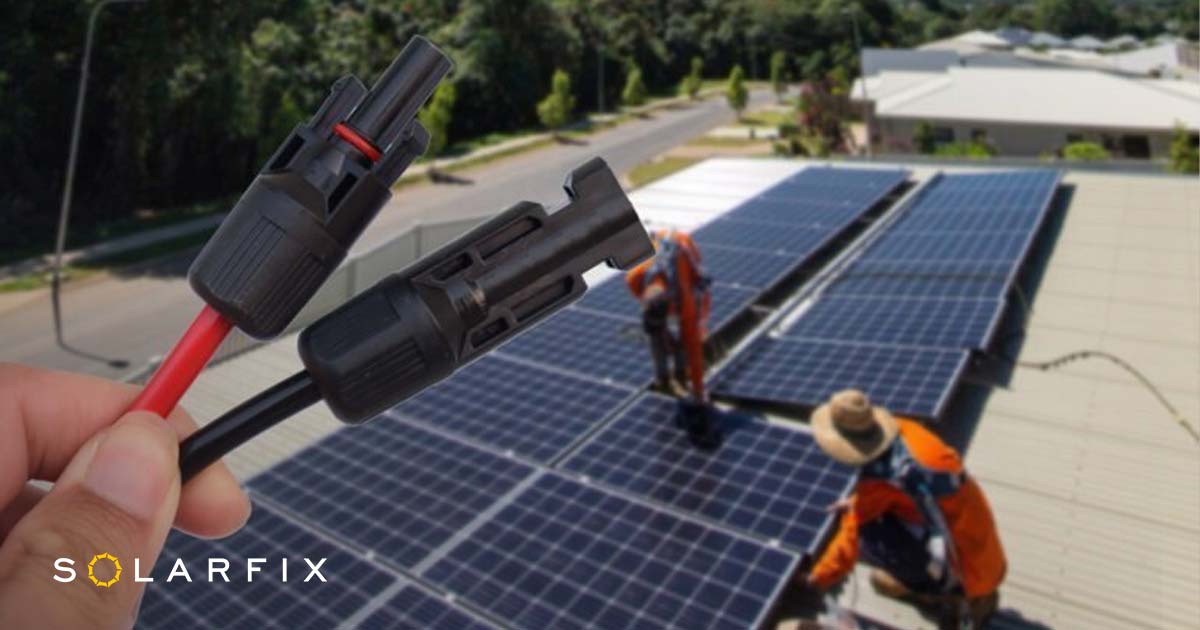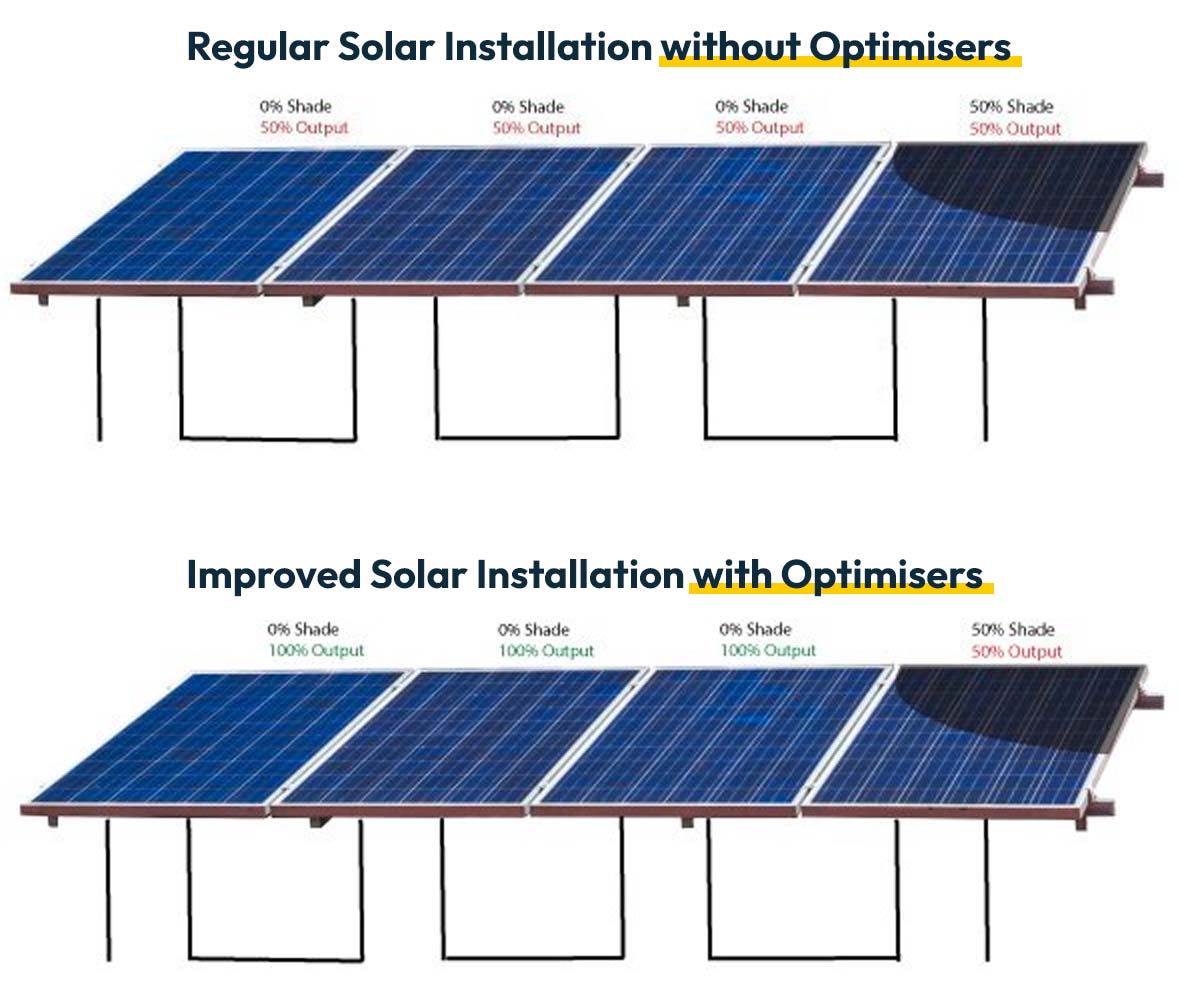What are Solar Panel Optimisers and how do they work?
Unleash the full potential of your solar panels! Discover what Solar Optimisers are and how they boost your home’s solar efficiency in this article.
You’re harnessing the sun’s power, but are you truly maximising it? Enter solar panel optimisers, the unsung heroes of solar energy.
Solar optimisers like personal trainers for your panels, ensuring each one’s pulling its weight. Don’t let shading or damage weaken your system’s performance.
Let’s delve into the world of optimisers, understand their workings, explore the types, and learn how to choose the right one.
So, are you ready to supercharge your solar system?
Solar Optimiser Overview
- Solar panel optimisers increase the overall output and efficiency of a solar installation.
- There are three options for solar panel optimisation: microinverters, smart panels, and discrete optimisers.
- Professional installation is highly recommended for solar panel optimisers to ensure proper integration and optimal performance.
- Solar panel optimisers are designed to withstand extreme weather conditions and contribute to the reliability and productivity of the system.
Understanding the Role of Solar Panel Optimisers
To fully grasp the role of solar panel optimisers, you’ll first need to understand that these devices play a crucial part in enhancing the performance of each of the panels in your solar installation.
Essentially, solar panel optimisers are small electronic devices that are attached to individual solar panels. They ensure that each panel can work at its maximum capacity, regardless of whether other solar panels are shaded or underperforming.
But how do they work? Solar panel optimisers use a technology known as Maximum Power Point Tracking (MPPT). This technology continuously adjusts the voltage and current of each panel to find the point where the panel generates the most electricity. In doing so, the optimisers work to maximise the overall energy output of your solar installation.
Understanding the role of solar panel optimisers is key to realising the benefits they offer. They not only increase your solar system’s efficiency but also provide panel-level monitoring capabilities. This allows you to identify and address any performance issues promptly, ensuring your system continues to operate at peak performance.
Exploring the Different Types of Solar Panel Optimisers
The first type of solar optimisers you might encounter are Microinverters. These compact devices convert the direct current (DC) produced by your panels into alternating current (AC), optimizing each panel’s output individually.
Next, you have Discrete DC optimisers. These are small devices fitted to each panel, improving their performance by adjusting the voltage and current to maximize power output.
Smart Panels, another type of solar optimisers, have built-in DC optimisers. This integrated approach results in a system that’s more efficient and easier to install.
Lastly, there are Maxim Optimisers, which use advanced chip technology to optimize each cell string within the panel, reducing the impact of shading or panel degradation.
Each type has its pros and cons, and the choice depends on your individual needs and circumstances. It’s recommended that you consult with a solar power professional to determine which type of optimiser best suits your system.
The Installation Process of Solar Panel Optimisers
How do you go about installing solar panel optimisers, you might wonder? The process begins when you decide to install solar in your property. A professional solar installer is crucial for this task as they have the necessary knowledge and skills. They understand how solar panel optimisers work and can ensure a successful solar installation.
Firstly, the solar installer surveys your property and the solar panel system to determine the best location for the optimisers. After that, they can install the solar panel optimisers, ensuring each panel is correctly connected. This process requires precision and expertise, as each optimiser must be correctly integrated into the solar panel system to function optimally.
Your solar installer will then conduct a series of tests to ensure that the optimisers are working as they should. Once they are satisfied with the installation, they can then connect your solar panel system to the power grid.
Bear in mind, solar panel optimisers are a significant part of your solar installation, and their proper installation is critical to harnessing solar energy efficiently.
Now, let’s move on to evaluating the performance of solar panel optimisers under various conditions.
Evaluating the Performance of Solar Panel Optimisers Under Various Conditions
You’re about to delve into the evaluation of solar panel optimisers’ performance under various conditions, and it’s vital to understand that this performance can fluctuate depending on factors such as weather and shading.
Weather Conditions:
- Under optimal conditions, solar panel optimisers work to enhance each panel’s performance, regardless of the overall system’s state. This ability is crucial on bright, sunny days when the panels have the potential to produce maximum power.
- On cloudy or rainy days, while the solar panel optimiser work may be diminished, they still ensure that each panel operates at its best possible efficiency levels.
Shading:
- Shading can dramatically affect a solar panel’s output. However, optimisers can mitigate this by allowing each panel to operate independently.
- This ensures that shaded panels don’t drag down the performance of the entire system.
Temperature:
- Extreme temperatures can also impact solar panel efficiency. Optimisers can help by regulating the voltage output of each panel, ensuring optimal operation regardless of temperature variations.
When evaluating performance, it’s crucial to consider these various conditions and how they impact the function of solar panel optimisers. By understanding how they work, you can better appreciate their value in a solar power system.
Frequently Asked Questions
How Often Do Solar Panel Optimisers Need Maintenance or Replacement?
You don’t often need to maintain or replace solar panel optimisers. They’re designed to last as long as your panels.
However, always check the manufacturer’s guidelines for specific maintenance or replacement schedules.
Can Solar Panel Optimisers Be Used With Any Type of Solar Panel?
Yes, you can use solar panel optimisers with any type of solar panel.
They’re designed to enhance the performance of each individual panel, regardless of make or model however, always check compatibility first.
What Are the Environmental Impacts of Using Solar Panel Optimisers?
Solar panel optimisers don’t have direct environmental impacts. They’re eco-friendly, improving the efficiency of your solar system, reducing wasted energy. You’ll consume less non-renewable energy, contributing to a reduction in carbon emissions.
How Do Solar Panel Optimisers Affect the Warranty of My Solar Panel System?
Solar panel optimisers, like a good insurance policy, won’t affect your solar system’s warranty. They’re designed to enhance performance, not cause damage.
However, always confirm with your installer and warranty provider to ensure compatibility.
Are Solar Panel Optimisers Compatible With Off-Grid Solar Systems?
Yes, you can use solar panel optimisers with off-grid systems. They’ll boost each panel’s performance, ensuring you’re getting the most energy possible, even if some panels aren’t performing at their best.
Visit www.solar-fix.com.au to learn more about why your solar isn’t working and to book an onsite solar system inspection, today. If you would like to talk to us immediately, please call 0410 658 790 today and one of our friendly solar repair experts will help answer any questions you have.


Sorry, the comment form is closed at this time.